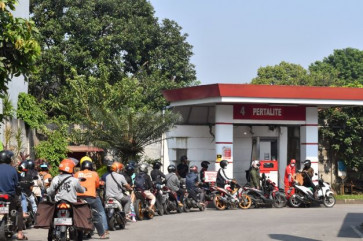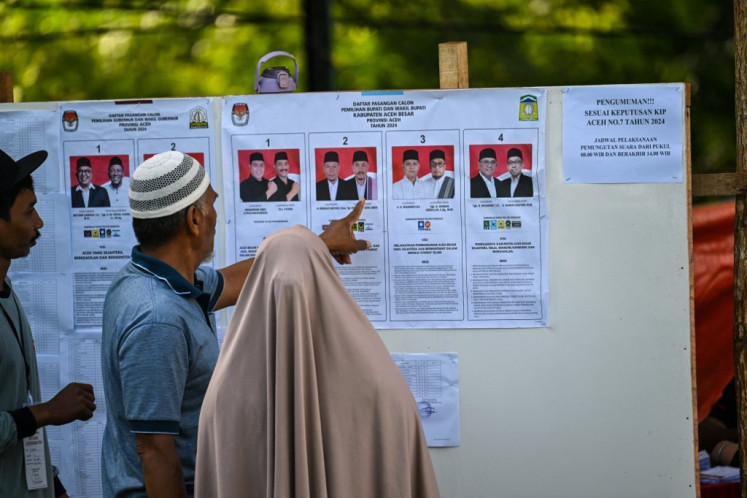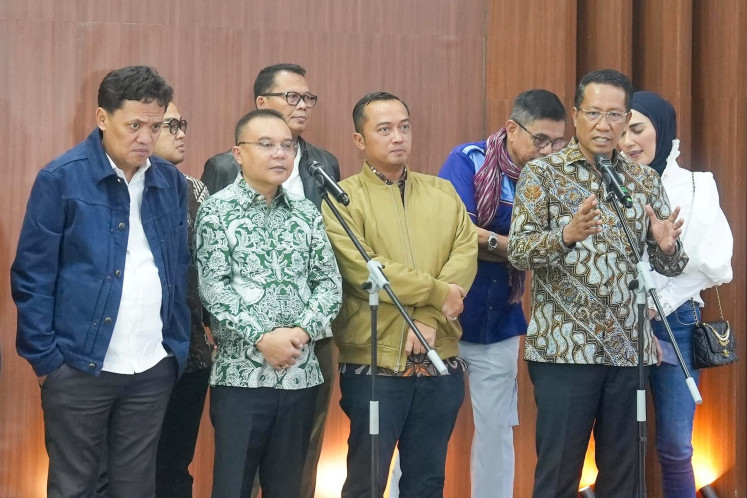Popular Reads
Top Results
Can't find what you're looking for?
View all search resultsPopular Reads
Top Results
Can't find what you're looking for?
View all search resultsYogyakarta readies for rains, Merapi debris flow
As the start of the rainy season approaches in October, residents living on the slopes of Mount Merapi, especially those near ejecta spewed out during last year’s eruption, have been told to watch for debris floods
Change text size
Gift Premium Articles
to Anyone
A
s the start of the rainy season approaches in October, residents living on the slopes of Mount Merapi, especially those near ejecta spewed out during last year’s eruption, have been told to watch for debris floods.
Residents living along the banks of Gendol River have been rushing to finish guide canals to direct the flow of lahar, or mud and volcanic debris, away from their homes.
“The guide canals have to be ready before the rainy season comes. Otherwise the lahar will directly hit the people’s villages,” Glagahharjo subdistrict head Suroto said on Thursday.
Rainy seasons will pose a danger of lahar floods for the next three to four years for residents near Merapi and those who live along the banks of the rivers that originate on Merapi as not all the debris ejected by the volcano last year made it down the slopes.
About 70 percent of an estimated 150 million cubic meters of volcanic material spewed by Merapi during its eruption in October and November last year remains on the volcano’s slopes, according to geologists.
Canals, some 3.5 meters deep, have been dug into the volcano’s side to connect to the rivers with their sources on Merapi to direct lahar away from homes.
There were several canals under construction near Gendol River, Glagahmalang and Ngancar, according to Suroto. “They are scheduled to be finished by October,” he said.
To reduce the accumulation of volcanic material near canals, sand taken from the excavations has been sold and the proceeds given to the owners of the fields traversed by the canals.
Cangkringan district head Samsul Bakri called on residents to cooperate to build the canals. “We have instructed the people to build the canals so the lahar won’t directly head into their villages,” he said.
The subdistricts in Cangringan still covered by thick layers of volcanic materials included Glagaharjo, Kepuharjo, Argomulyo and Wukirsari, according to Samsul. Cangkringan was one of the hardest-hit districts during last year’s eruption.
Lahar floods destroyed hundreds of houses and hectares of agricultural fields during last year’s rainy season and also plagued those who lived along the banks of the rivers originating on Merapi, including Code River, which passes through downtown Yogyakarta.
Bambang Widjaja Hariadi, a geologist from Gadjah Mada University in Yogyakarta, said that in the absence of infrastructure restoration, lahar floods would worsen this year if the region had a more intense rainy season.
“People must be extremely cautious about the lahar flood threat, especially during heavy downpours,” he said.
Bambang’s warning was echoed by Dewi Sri Sayuti from the Yogyakarta Volcanic Technology Development and Research Center (BPPTK). “People need not panic. They only need to be cautious,” she said.










